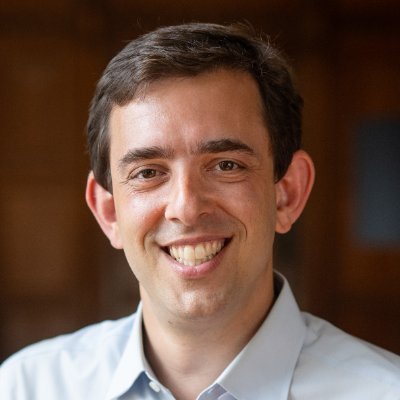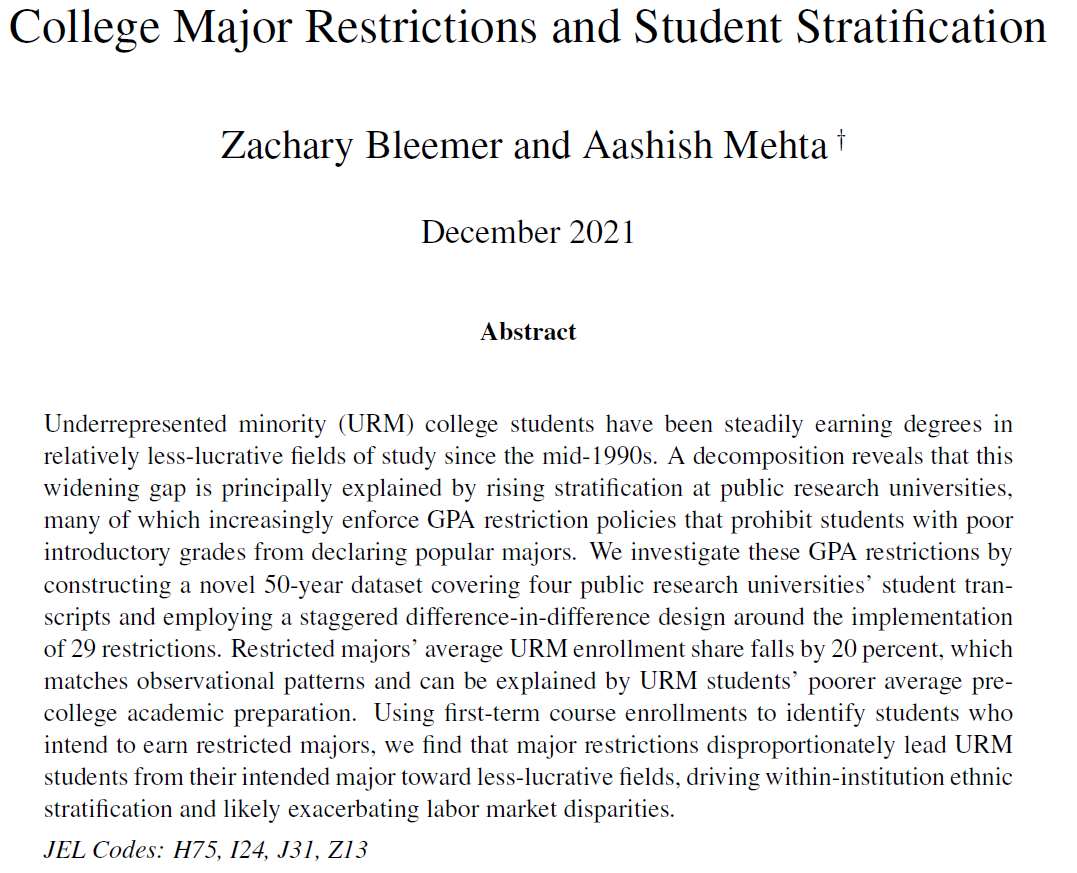
Zachary Bleemer
@zbleemer
Followers
3K
Following
980
Media
108
Statuses
537
Assistant Professor of Economics @PrincetonEcon and @nberpubs. Faculty Associate @OppInsights. Research tweets on economic mobility and education.
Princeton, NJ
Joined April 2008
New study: The relative wage premium for going to college has halved for low-income Americans since 1960. What is to blame? Rising selectivity? Tuition hikes? State disinvestment? We decompose changes in the premium since 1900 to find out. 🧵#EconTwitter
13
147
507
RT @julien_berman: It used to be that rich kids and poor kids got about the same benefits from going to college. Today, that’s no longer t….
0
20
0
RT @JohnHolbein1: This new working paper argues that female economics PhD students benefit tremendously from having female economics facult….
0
117
0
RT @lydiadepillis: From the NBERs in the last few weeks, a study that I think explains a lot about this political moment: Higher education….
0
6
0
Today, 10% of male college graduates earn CS degrees. It's doubled in 10 years. Most of that growth was driven by rich students, making college more regressive. Why? As I've shown before, universities exclude poor students from CS using restrictions:.
**New paper** Over the past 20 years (but not before!), Black and Hispanic college graduates have been steadily earning degrees in relatively lower-paying majors. The main culprit? An increasingly-common public university policy. A thread. #EconTwitter
1
4
33














